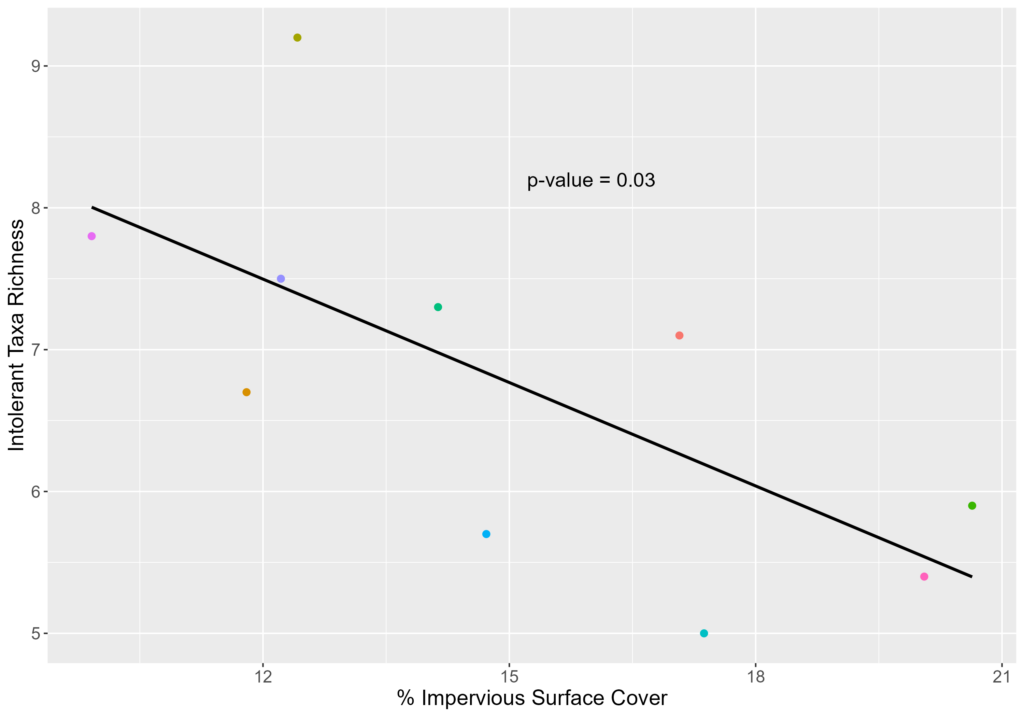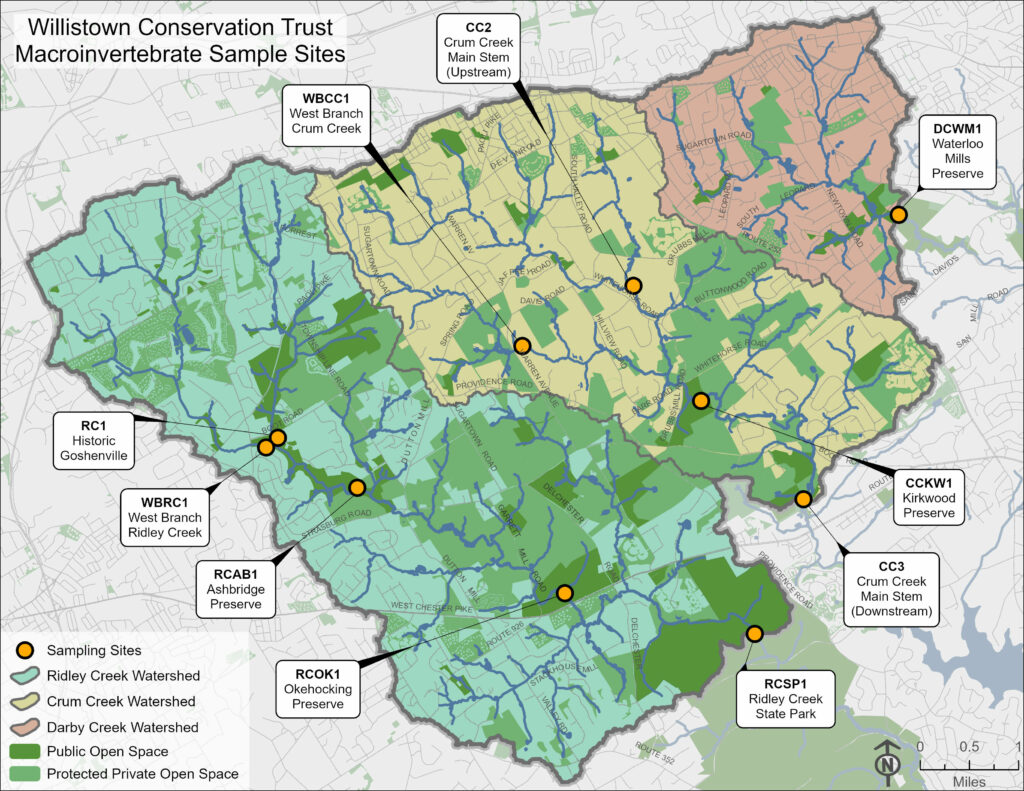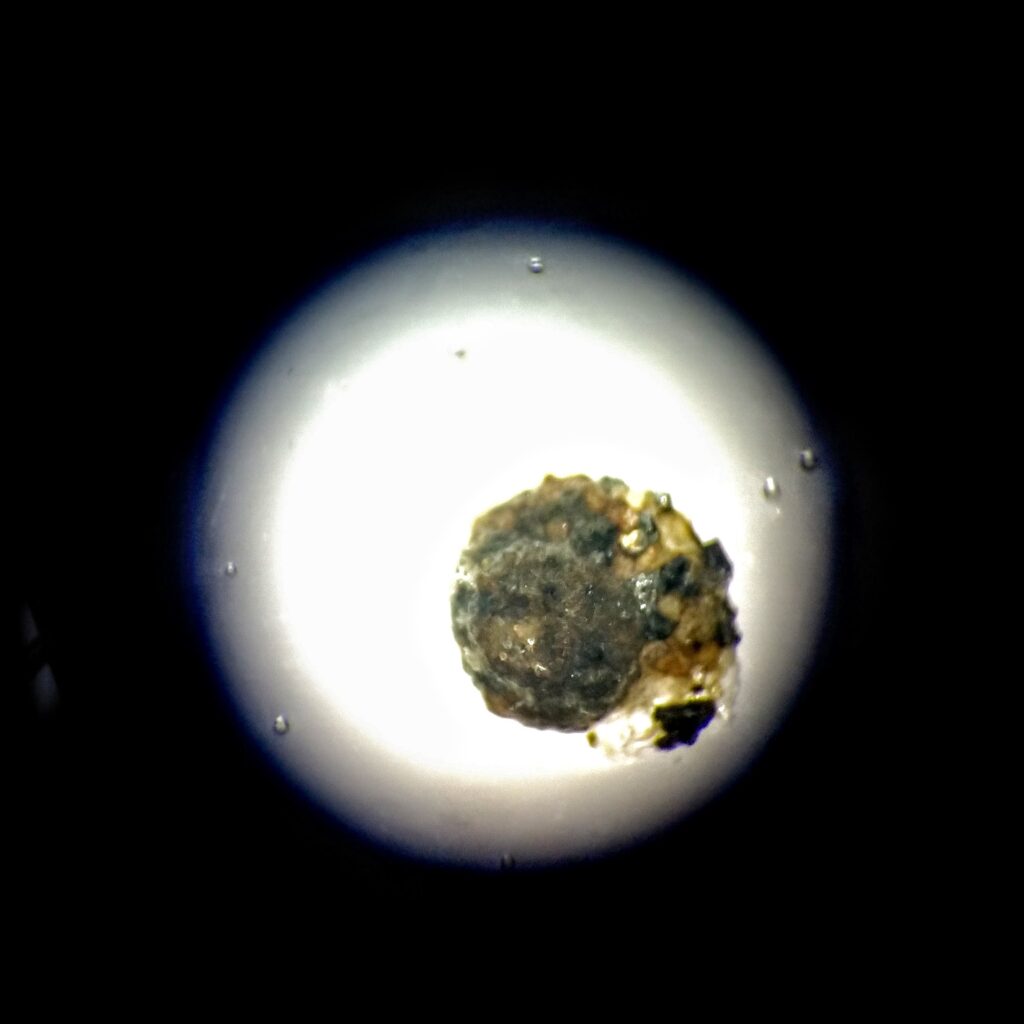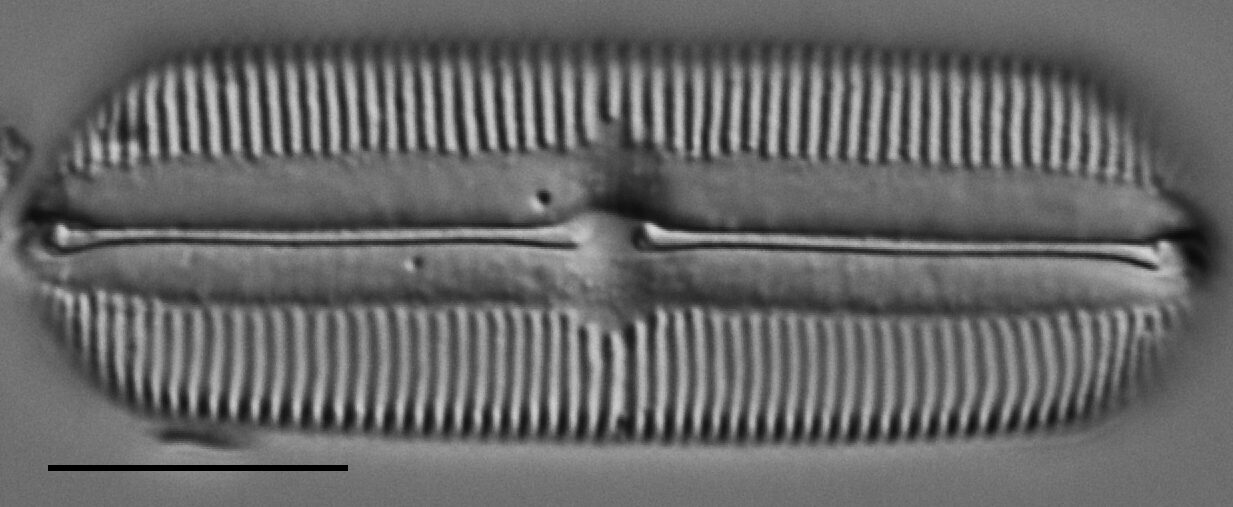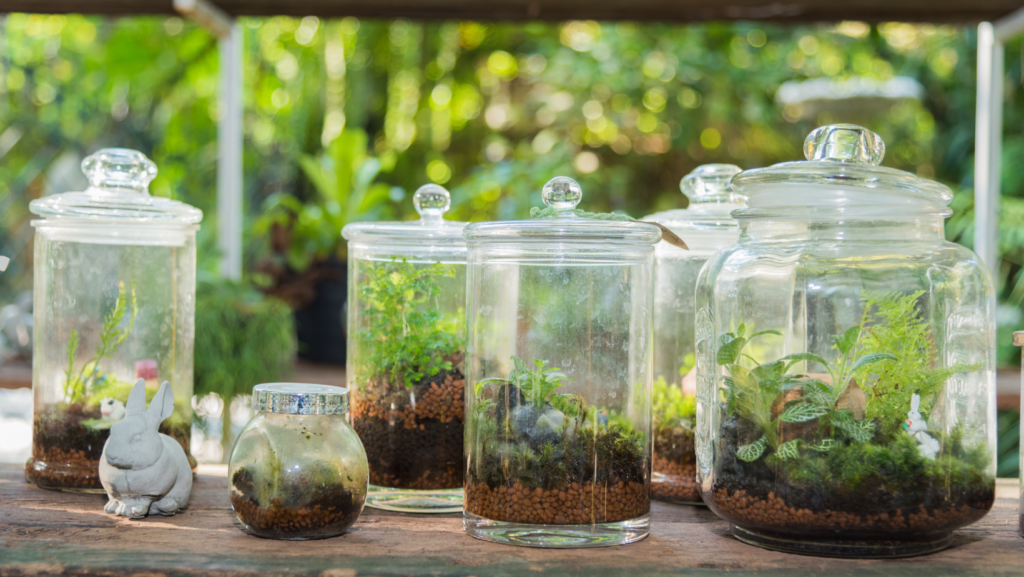A partnership between CRC Watersheds, Willistown Conservation Trust & Stroud Water Research Center and CRC’s Sandra Thompson
The Chester Ridley Crum Watershed Association (CRC), Willistown Conservation Trust (WCT), and Stroud Water Research Center partnered to study road salt contamination in Chester, Ridley, and Crum Creeks during the 25th annual stream clean up. The concept for this idea came in 2023 while I was the acting Director of Development, Education & Outreach for CRC. I met with Lauren McGrath,WCT’s Director of Watershed Protection, to see how CRC and WCT could work together to understand conditions in the Chester, Ridley, and Crum Creek watersheds.
It was during this discussion that I learned about The Darby Creek Community Science Monitoring Program – a partnered project between WCT and Darby Creek Valley Association, which trains volunteers to collect water samples in Darby Creek and test for chloride and conductivity levels. Chloride is introduced in a watershed most often through the application of road salts and can build up in the soils, causing high levels throughout the year.
Conductivity is a measurement of water’s ability to conduct an electric current, and is often used to measure the impact of human actions on the landscape. Conductivity is often elevated in areas where there are higher levels of impervious surfaces, which are any surface that water cannot pass through – like pavement, rooftops, and sidewalks. There is a close relationship between these two measurements. In the winter, the application of road salt on driveways, roads, and sidewalks drives higher levels of conductivity in waterways – while salt is not the only driver of higher conductivity levels, it is the major contributor in the region. By looking at these two measurements together, we can learn alot about what is impacting the health of these streams very quickly!
As our discussion went on, I suggested that CRC could help to grow the understanding of water quality in the Cheser, Ridley and Crum Creek watersheds as CRC is already so well established in the region with a strong base of driven volunteers and WCT is dedicated to understanding water chemistry in local streams. This connection generated excitement about the possibilities that this might offer and I was encouraged to connect with another partner, David Bressler, Stroud Water Research Center’s Community Science Facilitator, to see how we might have all three organizations work together. Together, we worked with Carly Lare, CRC’s Executive Director, to create a plan to add water chemistry sampling to the 25th Annual CRC Streams Cleanup Day. Because we would be collecting many samples at one time, we called the sample day a Snapshot! With Stroud Water Research Center supplying the chloride strips, WCT providing the technical guidance, sample bottles and analysis space, and CRC bringing volunteers and sample sites together, the Streams Cleanup Snapshot was ready to go!
CRC’s Annual Streams Cleanup Day occurred this year on March 16th. Each cleanup location was sent instructions and a labeled bottle to collect a stream sample. 30 water samples were returned for testing and on Monday, March 18th, staff from WCT were joined by Susan Day, a dedicated volunteer and Master Watershed Steward, and I to perform chloride and conductivity testing. Over the course of 3 hours, we saw that chloride and conductivity levels were elevated at every site across all three watersheds but there were some locations that were higher than expected (Map 1).
In Chester Creek, the highest chloride and conductivity levels were recorded in 3 sites in West Chester Borough near the headwaters of Chester Creek, In Ridley Creek, the highest levels were recorded at Houtman Park, and in Crum Creek, the highest levels were recorded at Drexel Lodge Park and just downstream of the Springfield Mall. All of the locations where there were higher than expected levels of chloride and conductivity had two things in common: they were small streams within a highly paved landscape that is salted heavily before and during winter storm events. The size of the stream is very important for understanding how intense the salt readings are – as a stream gets bigger, there is more water, which can dilute the chloride and conductivity readings, making it more challenging to see where problems areas are on the landscape. Through this sample snapshot, we were able to learn very quickly where some of the problem areas in the Chester, Ridley and Crum Creek watersheds exist.
Now, more than ever before, thanks to many user-friendly, cost effective methods available, volunteers who get involved in ‘Community Science’ can make a huge impact. One of CRC’s greatest strengths is its robust volunteer program which makes an incredible impact every year thanks to an extremely well organized group of about 1,000 volunteers. On this single day, each year, those volunteers spread out among 35+ sites along the three creeks that CRC oversees – Chester, Ridley and Crum – and clean out over 40,000 lbs of trash. This event was a success because CRC’s passionate volunteers came together to improve the health of their watersheds by cleaning up the visible pollution and helped to show where the less visible pollution – salt – is causing problems. Together, we can continue to work to both beautify and improve the health of Chester, Ridley and Crum Creeks!
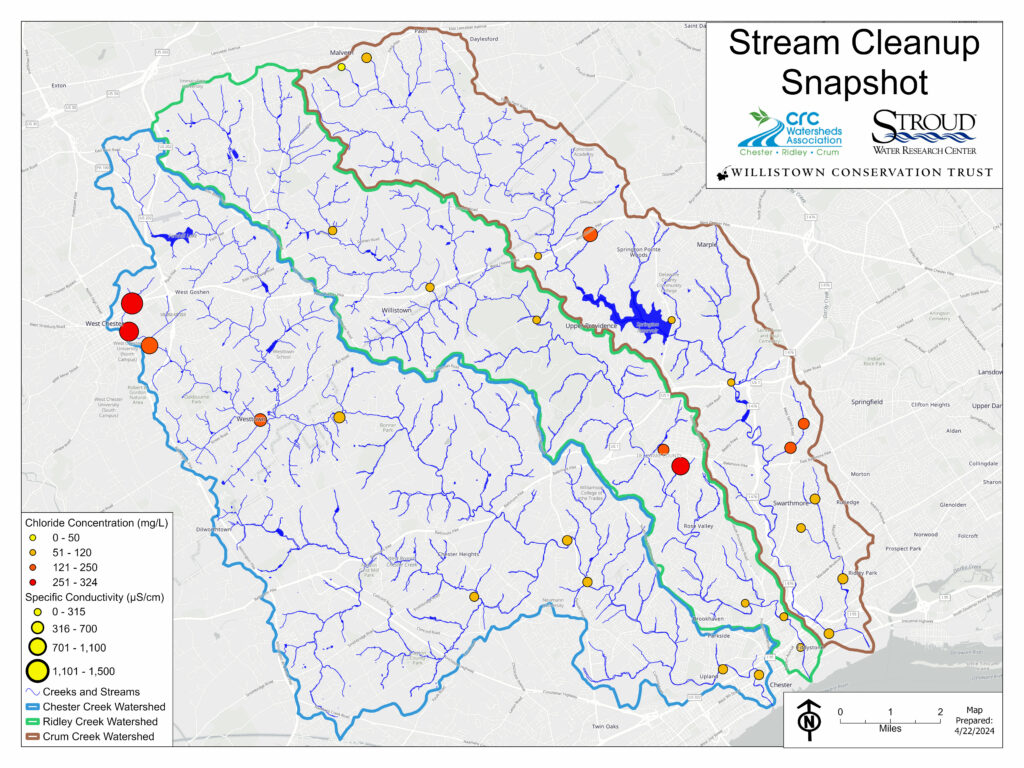
Map 1. Stream Cleanup Snapshot Sample Sites. Each point is a cleanup location that collected a stream sample. The size of the point shows the impact of conductivity, with larger points having higher results. The color of the point shows the concentration of chloride at the location, with low levels in yellow, medium levels in orange and high levels in red.

